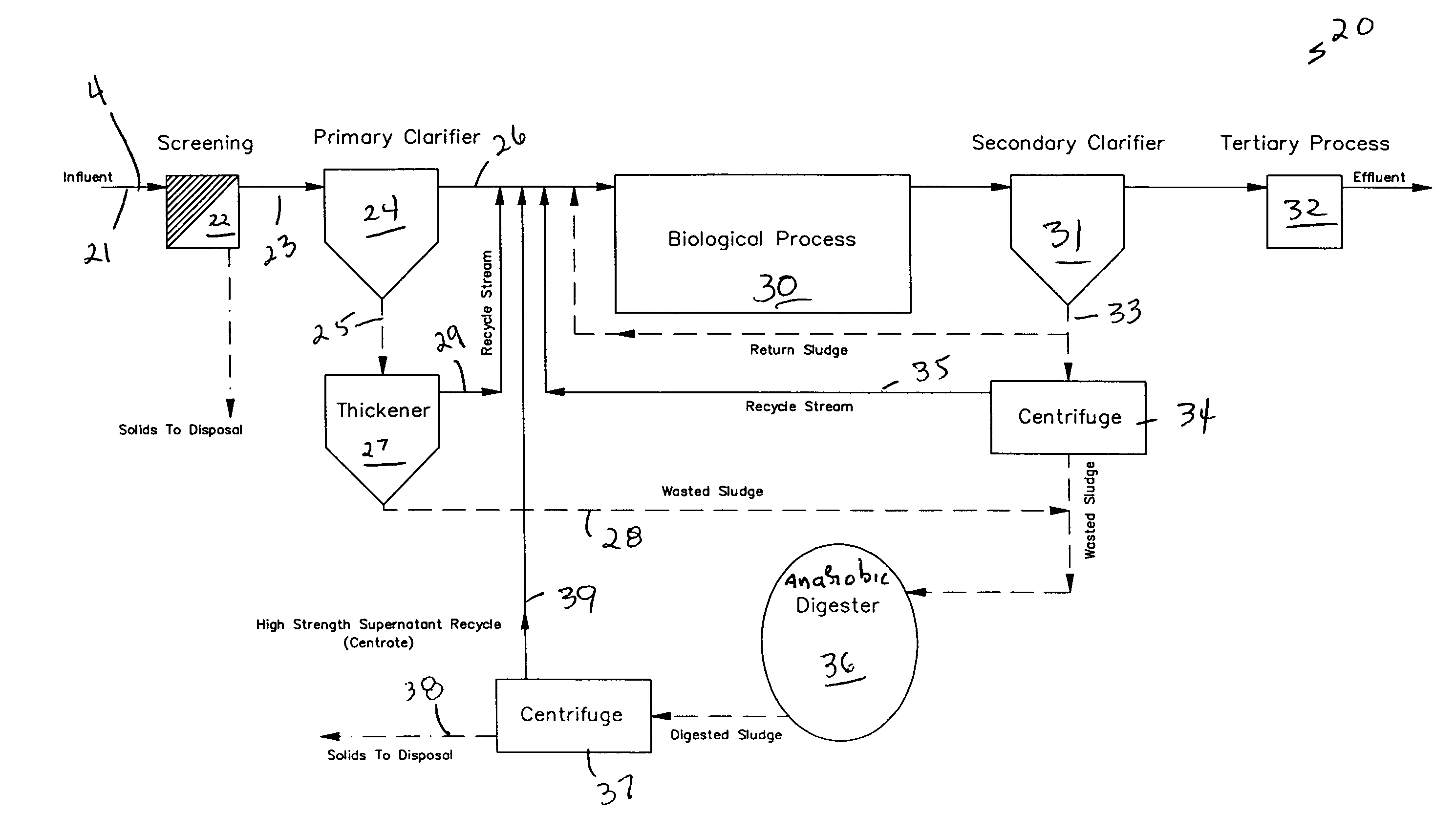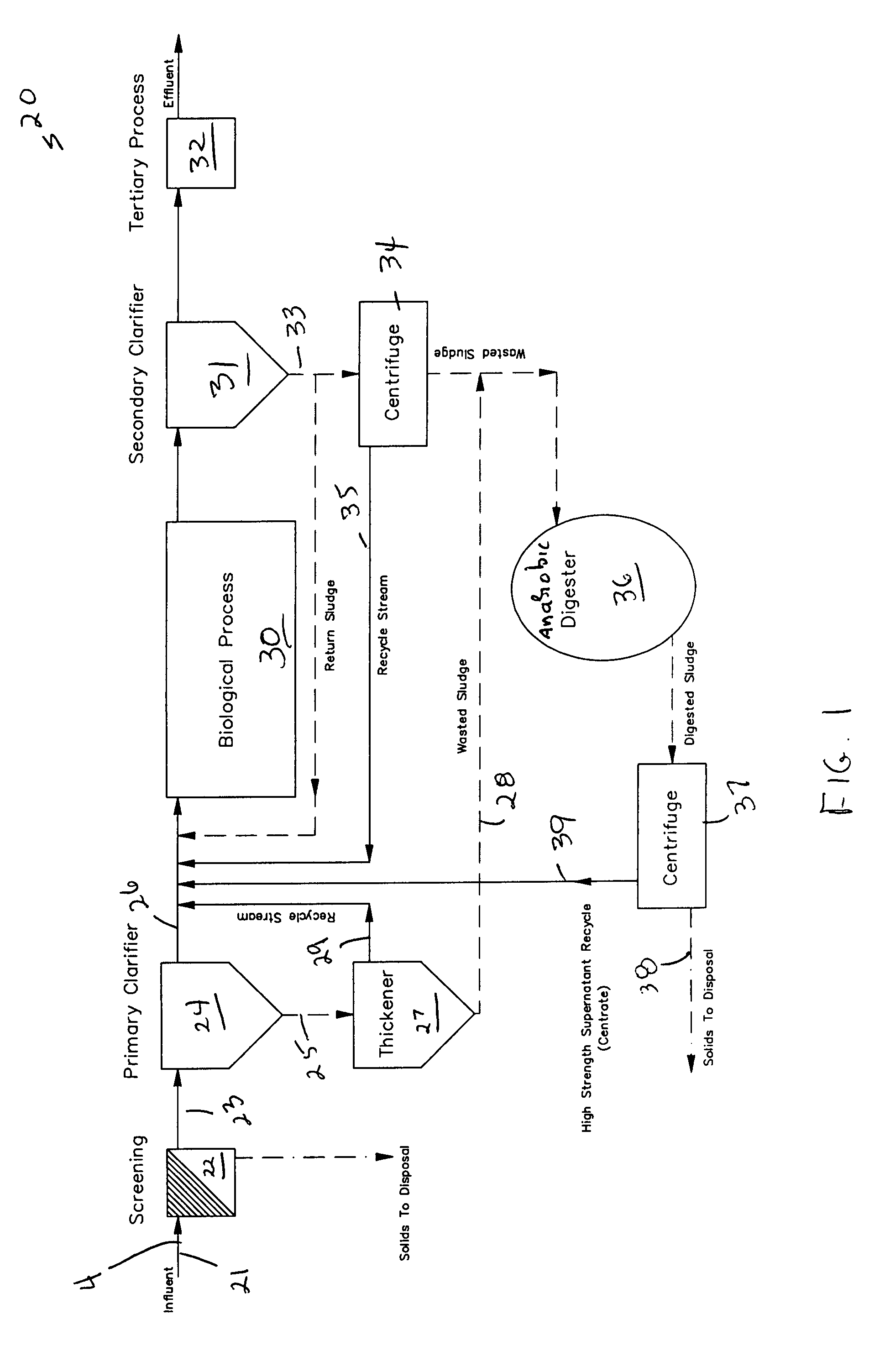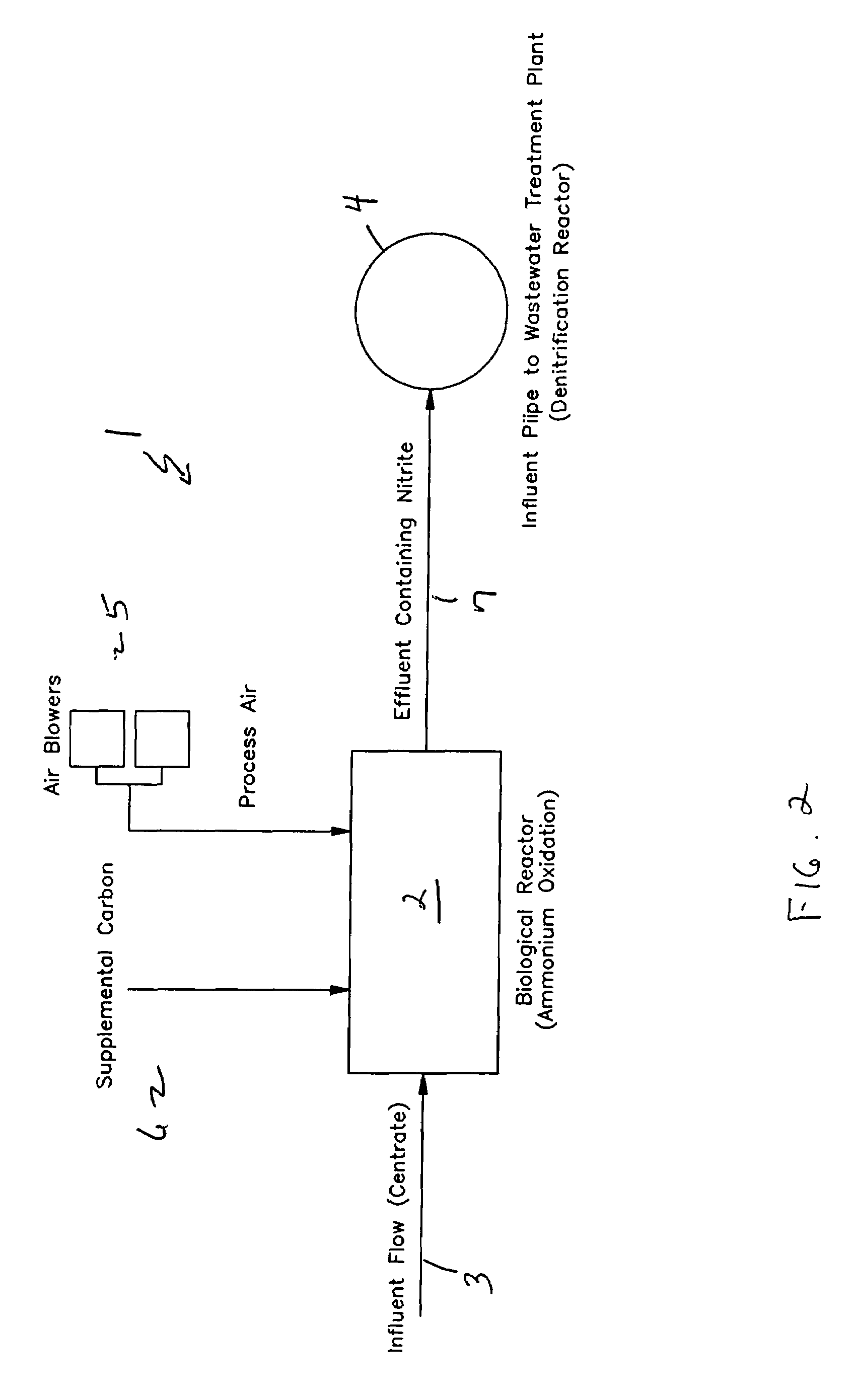Ammonia oxidation and pipe denitrification
a technology of ammonia oxidation and denitrification pipe, which is applied in the field of waste treatment systems, can solve the problems that denitrification cannot proceed without a supplemental carbon source, and the recycle stream typically does not contain the requisite carbon,
- Summary
- Abstract
- Description
- Claims
- Application Information
AI Technical Summary
Benefits of technology
Problems solved by technology
Method used
Image
Examples
Embodiment Construction
[0022]Referring to the drawings in detail wherein like elements are indicated by like numerals, there are shown a process flow for a typical wastewater treatment plant, and the invention process installed in the wastewater treatment plant 20.
[0023]Referring more particularly to FIG. 1, a typical wastewater treatment plant 20 will have a raw influent 21 passed to the plant 20 through an influent pipe 4. Solids within the raw influent will be filtered out through a screening assembly 22 and passed out for disposal. The screened raw influent 23 is then passed to a primary clarifier 24 where solids still within the screened raw influent will separate into a sludge component 25 and a liquid component 26. The sludge component 25 is passed to a thickener 27 with the wasted sludge 28 then passed to a digester 36. The clarifier liquid component 26 and thickener liquid component 29 are then brought into the treatment plant's main biological processor 30. The biological processor output is the...
PUM
| Property | Measurement | Unit |
|---|---|---|
| concentrations | aaaaa | aaaaa |
| concentrations | aaaaa | aaaaa |
| concentrations | aaaaa | aaaaa |
Abstract
Description
Claims
Application Information
 Login to View More
Login to View More - R&D
- Intellectual Property
- Life Sciences
- Materials
- Tech Scout
- Unparalleled Data Quality
- Higher Quality Content
- 60% Fewer Hallucinations
Browse by: Latest US Patents, China's latest patents, Technical Efficacy Thesaurus, Application Domain, Technology Topic, Popular Technical Reports.
© 2025 PatSnap. All rights reserved.Legal|Privacy policy|Modern Slavery Act Transparency Statement|Sitemap|About US| Contact US: help@patsnap.com



